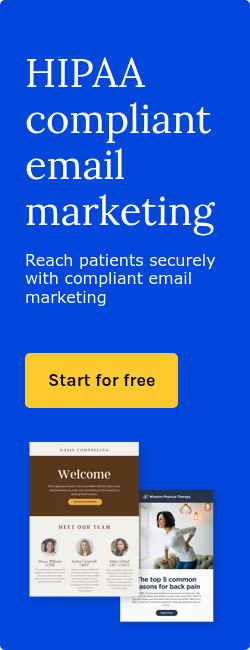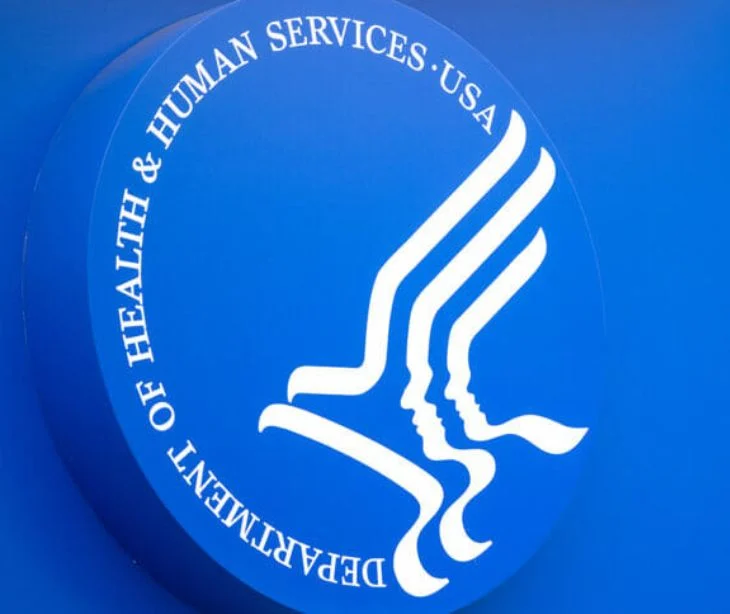
Our comprehensive Q4 analysis delves into an extensive dataset of over 14.5 million emails sent throughout the latter half of 2023 by 121 healthcare organizations. This report highlights engagement metrics, contrasting drip and marketing emails, and reveals how seasonality and day-of-the-week dynamics influence overall performance.
Snapshot:
- Dataset: 14.5 million emails from the last two quarters of 2023.
- Contributors: 121 unique healthcare industry senders.
- Focus: Engagement trends, drip vs. marketing email effectiveness, and day-specific insights.
Q3 and Q4 overall summary
- Average view rate: Approximately 30.98%. This means that, on average, the recipients viewed about 31% of the delivered emails.
- Average click-through rate: Approximately 2.31%. This rate is the percentage of views that resulted in clicks.
- Average Unsubscribe Rate: About 0.06%. This indicates that a very small percentage of every delivered email resulted in recipients unsubscribing.
Related: Examples of personalized healthcare marketing emails
A summary of Q4 2023 email marketing trends
In Q4, marketing emails had a significantly higher view rate compared to drip emails. However, drip emails outperformed marketing emails in terms of click rate and click-through rate, indicating higher engagement.
The bounce rate for drip emails was notably lower than that for marketing emails, suggesting better deliverability or list accuracy for drip campaigns this quarter.
The unsubscribe rates for both types of emails remained very low, with drip emails having a slightly lower rate than marketing emails.
Q4 2023 email marketing and drip campaign benchmarks
| Metric | Marketing emails | Drip emails |
| View rate | 33.44% | 14.92% |
| Click-through rate | 1.86% | 9.26% |
| Bounce rate | 3.53% | 0.72% |
| Unsubscribe rate | 0.05% | 0.04% |
Unpacking Q3 vs Q4 trends
View and click rates fluctuated, with the highest view rate in June and the highest click-through rate in July. There was a significant decrease in bounce rate after June, showing improved email deliverability.
The unsubscribe rate remained relatively low throughout the months and quarters, indicating that the email content was well-received or that the audience was well-targeted.
Below are the month-over-month and quarterly email campaign metrics for the healthcare marketers.
Q3 and Q4 2023 quarterly email benchmarks
| Quarter | View rate | Click-through rate | Bounce rate | Unsubscribe rate |
| Q3 | 27.09% | 2.92% | 9.62% | 0.07% |
| Q4 | 33.14% | 1.92% | 3.49% | 0.05% |
Q3 and Q4 2023 month-over-month email benchmarks
| Month | View rate | Click-through rate | Bounce rate | Unsubscribe rate |
| July | 21.02% | 6.19% | 13.86% | 0.05% |
| August | 20.93% | 3.27% | 13.52% | 0.06% |
| September | 35.07% | 2.15% | 3.51% | 0.09% |
| October | 32.36% | 2.49% | 4.82% | 0.05% |
| November | 34.43% | 1.63% | 2.78% | 0.06% |
| December | 32.17% | 1.58% | 2.69% | 0.05% |
Is there seasonality in healthcare email marketing?
Focusing solely on Q3 and Q4 and excluding Q2, we can look at the changes in the metrics month-over-month and between the two quarters to identify any signs of seasonality.
Q3 (July to September) 2023
- View rate: There's a noticeable increase from July to September, with September having a significantly higher view rate than July or August.
- Click-through rate: July stands out with the highest click-through rate of the quarter.
Q4 (October to December) 2023:
- View rate: The view rate in October is slightly lower than in September but remains fairly consistent in November and December.
- Click-through rate: There's a gradual decrease in the click-through rate from October to December.
- Bounce rate: The bounce rate is consistently low throughout Q4, which is a positive sign.
Seasonality: Comparing Q3 to Q4
- The view rate is higher in Q4 compared to Q3, with the exception of July's lower rate.
- Click-through rates are higher in Q3 than in Q4, suggesting that the engagement with emails may be higher in Q3.
- The bounce rate significantly improved in Q4 compared to Q3.
Unsubscribe rate: The unsubscribe rate is slightly lower in Q4 than in Q3.
Some seasonality is observed, particularly with engagement metrics like view rate and click-through rate being higher in Q3 than in Q4. This could be due to various factors, such as different marketing strategies, customer behavior changes, or, indeed, seasonal events like the Summer holidays in Q3 or Thanksgiving and Christmas in Q4.
Comparing marketing emails to drip campaign emails in Q4 2023
In Q4, marketing emails had a significantly higher view rate compared to drip emails. However, drip emails outperformed marketing emails in terms of click-through rate, indicating higher engagement.
The bounce rate for drip emails was notably lower than that for marketing emails, suggesting better deliverability or list accuracy for drip campaigns in this quarter. The unsubscribe rates for both types of emails remained very low, with drip emails having a slightly lower rate than marketing emails.
Marketing emails vs Drip emails
| Metric | Marketing emails | Drip emails |
| View rate | 33.44% | 14.92% |
| Click-through rate | 1.86% | 9.26% |
| Bounce rate | 3.53% | 0.72% |
| Unsubscribe rate | 0.05% | 0.04% |
Related: Examples of personalized healthcare drip campaign emails
Which is the best day to send marketing emails?
The performance of both marketing and drip emails varies by the day of the week they are sent.
For marketing emails, Sunday shows the highest view rate, while for drip emails, Thursday demonstrates the highest click-through rate.
Marketing email performance by day:
| Day | View rate | Click-through rate | Bounce rate | Unsubscribe rate |
| Monday | 26.46% | 2.85% | 1.55% | 0.05% |
| Tuesday | 32.23% | 1.54% | 3.07% | 0.06% |
| Wednesday | 24.55% | 2.20% | 4.05% | 0.06% |
| Thursday | 36.21% | 1.88% | 4.94% | 0.06% |
| Friday | 38.95% | 1.76% | 3.72% | 0.04% |
| Saturday | 30.73% | 1.20% | 0.87% | 0.02% |
| Sunday | 46.94% | 1.57% | 1.24% | 0.02% |
Drip email performance by day:
| Day | View rate | Click-through rate | Bounce rate | Unsubscribe rate |
| Monday | 62.20% | 11.49% | 1.75% | 0.16% |
| Tuesday | 50.54% | 6.98% | 3.56% | 0.24% |
| Wednesday | 53.55% | 8.56% | 3.63% | 0.07% |
| Thursday | 61.08% | 12.81% | 0.84% | 0.25% |
| Friday | 46.78% | 6.70% | 3.37% | 0.04% |
| Saturday | 1.19% | 5.33% | 0.00% | 0.00% |
| Sunday | 60.87% | 5.60% | 1.78% | 0.26% |
Q4 analysis and insights in healthcare email marketing
- Frequency of email sends: Most healthcare marketers sent emails approximately once a week on average and about 4 times monthly.
- Optimal day for sending: In Q4, Thursday emerged as the best day to send drip emails, exhibiting the highest click-through rate at 12.81%.
- Average view rate: The average view rate for marketing emails in Q4 was around 33.44%.
- High engagement for drip emails: Drip emails in Q4 had a significant click-through rate of 9.26%.
- Seasonal engagement: Comparing Q3 and Q4, there was a noticeable increase in the view rate for marketing emails in Q4.
- Bounce rate improvement: The bounce rate for healthcare marketing emails improved from 7.05% in Q3 to 3.53% in Q4, indicating better email deliverability or list hygiene.
- Drip emails' unsubscribe rate: The unsubscribe rate for drip emails in Q4 was slightly lower than that for marketing emails, standing at 0.04% for the best-performing day (Friday).
- Marketing emails' best day: For marketing emails, Sunday showed the highest view rate at 46.94% in Q4.
- Day of week impact: The performance metrics varied significantly based on the day of the week, with drip emails sent on Mondays showing the highest view rate at 62.20%.
- Decrease in click rates from Q3 to Q4: Despite the increase in view rates, there was a decrease in click rates from Q3 to Q4 for both marketing and drip emails.
- Lower bounce rates on weekends: For marketing emails, the bounce rate was notably lower on weekends, with Saturday and Sunday having bounce rates of 0.87% and 1.24%, respectively. This could indicate better email engagement or deliverability during these days.
- Weekday preference for drip emails: The weekdays, particularly Monday and Thursday, showed significantly higher engagement for drip emails, with view rates exceeding 60%.
- Stability in unsubscribe rates: Throughout Q4, unsubscribe rates for both marketing and drip emails remained consistently low, suggesting content relevancy and appropriate targeting.
- Decreased engagement in click-through rates: There was a trend of decreased click-through rates from the start to the end of Q4 for both types of emails, indicating a potential waning of audience engagement or effectiveness of content over the quarter.
- Impact of campaign type on engagement: The comparison between drip and marketing emails highlights the importance of campaign type, with drip campaigns generally showing higher engagement metrics.
- Increased engagement in early Q4: For both marketing and drip emails, early Q4 (October) showed higher engagement rates compared to later in the quarter.
- Marketing emails' consistency in view rates: Marketing emails maintained a relatively consistent view rate across Q4, suggesting a steady interest level from recipients.
- Effectiveness of drip emails on Thursdays: Drip emails sent on Thursdays in Q4 had the highest click-through rate.
- Varied performance by day of the week: The performance metrics of emails varied significantly by the day of the week, underscoring the importance of choosing the right day for email dispatch based on the type of email and desired engagement.
Do marketing emails have to be HIPAA compliant?
Under HIPAA, marketing is defined as communication about a product or service that encourages recipients to purchase or use the product or service. So email communication, including email marketing, must adhere to HIPAA compliance when used by covered entities or their business associates.
Note: According to the U.S. Department of Health & Human Services, if the marketing involves protected health information (PHI), it generally requires an individual's authorization. This is especially relevant for email marketing, where PHI might be used to target or tailor messages. Therefore, for email marketing to be HIPAA compliant:
- Obtain authorization: Before sending marketing emails that involve PHI, covered entities must secure clear and specific authorization from the individual. This authorization should outline what information is being used, the purpose, and the parties involved in the marketing activity.
- Limit PHI exposure: When using PHI in email marketing, use only the information required for that specific campaign.
- Ensure secure transmission: Email marketing containing PHI should be transmitted securely, employing encryption and other security measures to prevent unauthorized access.
- Business associate agreements (BAAs): A BAA must be in place if a third-party email marketing service is used. Most email marketing platforms won't sign one, so covered entities must use a service, like Paubox Marketing, that will sign a BAA and understand HIPAA regulations.
- Separation of healthcare and marketing content: Care should be taken to distinguish between healthcare-related communications (which are generally not considered marketing) and actual marketing communications.
Go deeper: What are the opt in exceptions?
Subscribe to Paubox Weekly
Every Friday we'll bring you the most important news from Paubox. Our aim is to make you smarter, faster.

 Dean Levitt
Dean Levitt



